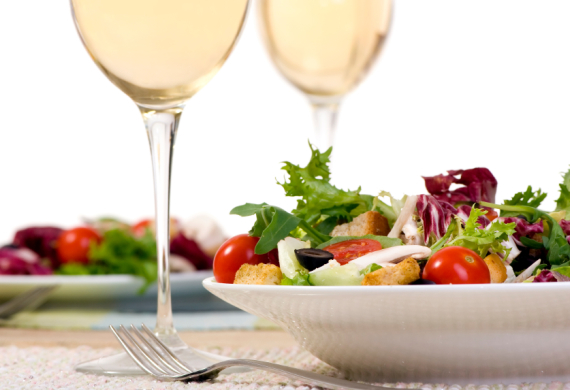 When it comes to wine pairing, the basic rule is that white wines go best with fish and poultry and red wines go best with red meat. But what if meat isn’t part of your diet? For vegetarians, wine pairing can be more complicated. Luckily, there are some equally easy rules to follow to make sure that your delicious veggie dish is made even better by your glass of wine.
When it comes to wine pairing, the basic rule is that white wines go best with fish and poultry and red wines go best with red meat. But what if meat isn’t part of your diet? For vegetarians, wine pairing can be more complicated. Luckily, there are some equally easy rules to follow to make sure that your delicious veggie dish is made even better by your glass of wine.
Certain vegetables have components that don’t pair well with just any wine, such as artichokes and asparagus. If you’re eating artichokes, don’t pour a glass of a sweeter wine (like an American chardonnay). Artichokes make everything taste a little sweeter and the wine will taste too sweet. The phosphorus in asparagus can make wine pairing tricky, too. Vegetables and fruits that are high in acidity—like tomatoes or lemons—can make certain wines taste flat. If you’re a vegetarian that enjoys milk and cheese, chose a wine that is high in acidity or a sparkling wine. These keep the protein and milk fat from cloaking the palate–which makes it difficult to fully taste the wine.
The best pairing for most vegetable dishes are high-acid, low-alcohol wines. For white wine, go with German and Austrian Rieslings, Northern Italian wines, Spanish Albarino, dry Vouvray or Muscadet, South African Chenin Blanc and Italian verdicchio or vermintion. For reds, try pinot noir from cooler climates (Oregon, Northern France, Germany), Italian barbera, and many Rioja reds. If you enjoy chardonnays, cabernet sauvignons, syrahs and merlots—remember that they typically pair better with meat than most vegetarian dishes, so try them with heartier foods like beans, mushrooms, and potatoes. Of course, everyone’s tastes are different, but experimenting with wine and food is always a good excuse to have a little wine tasting of your own. For more ideas on specific meal pairings, check out this great guide. Cheers!

